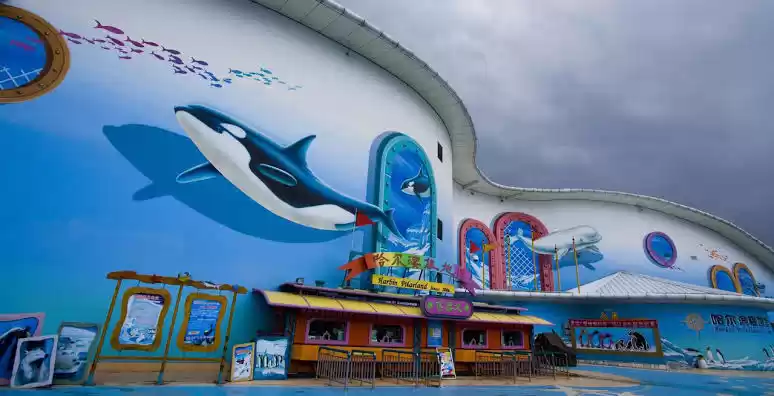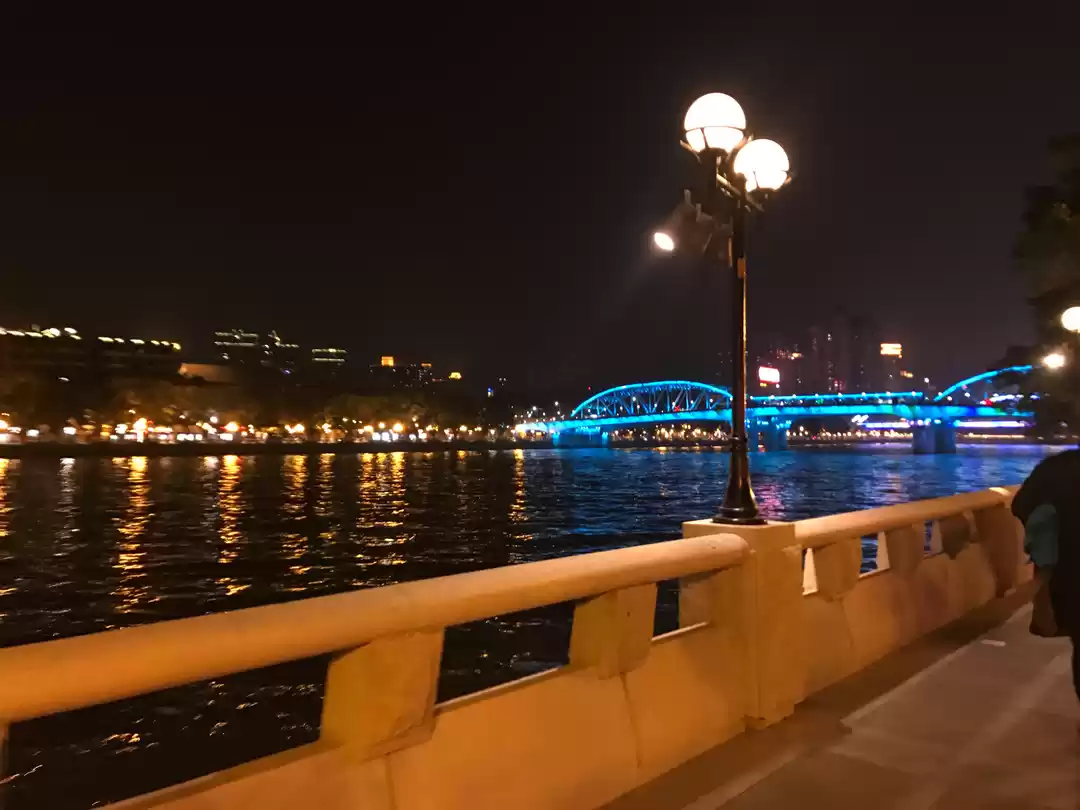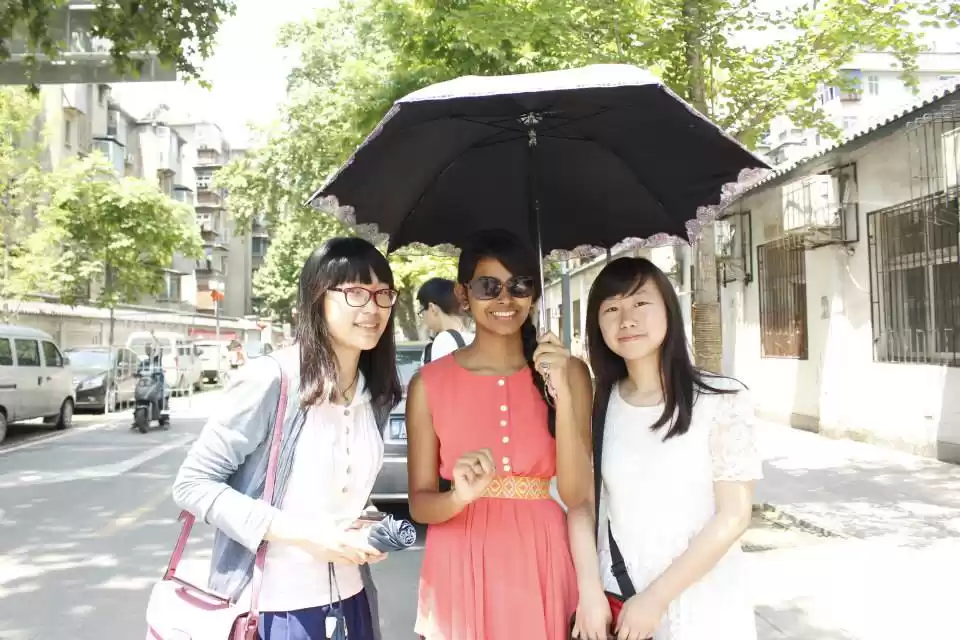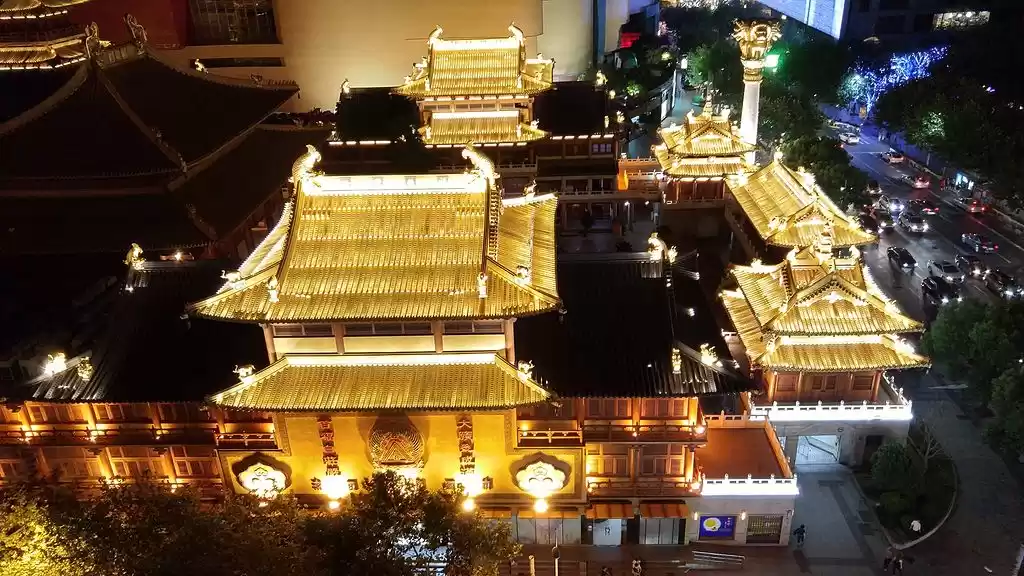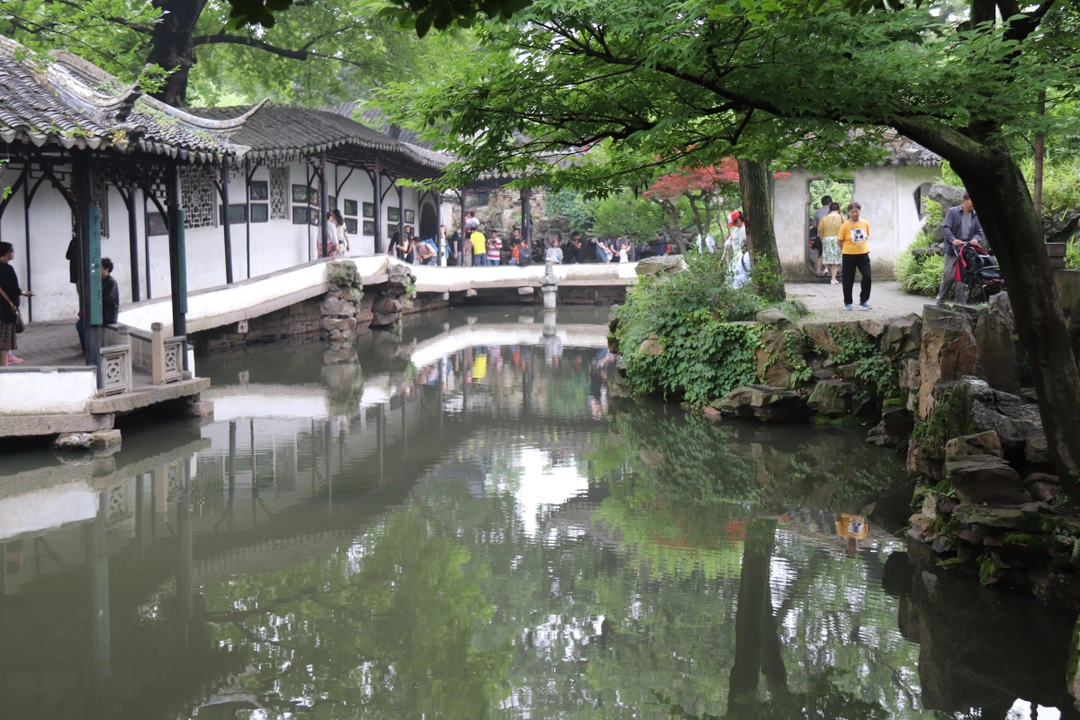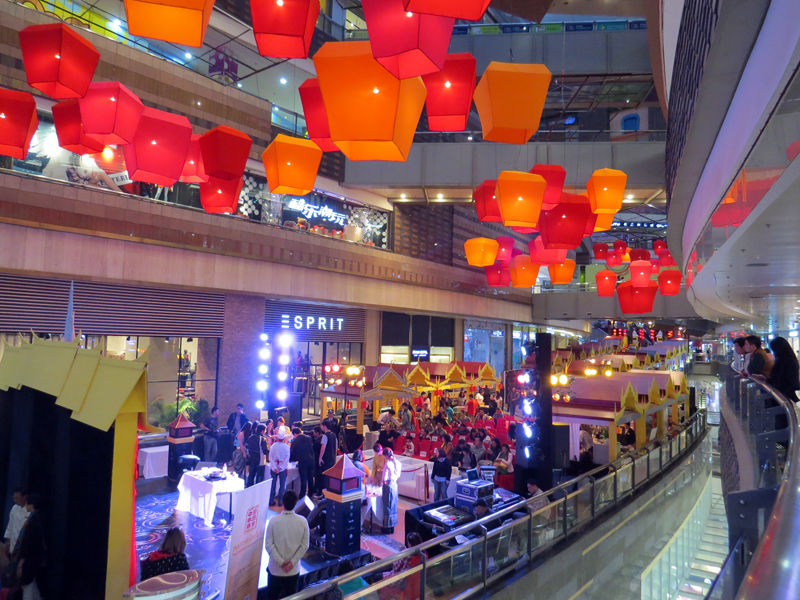








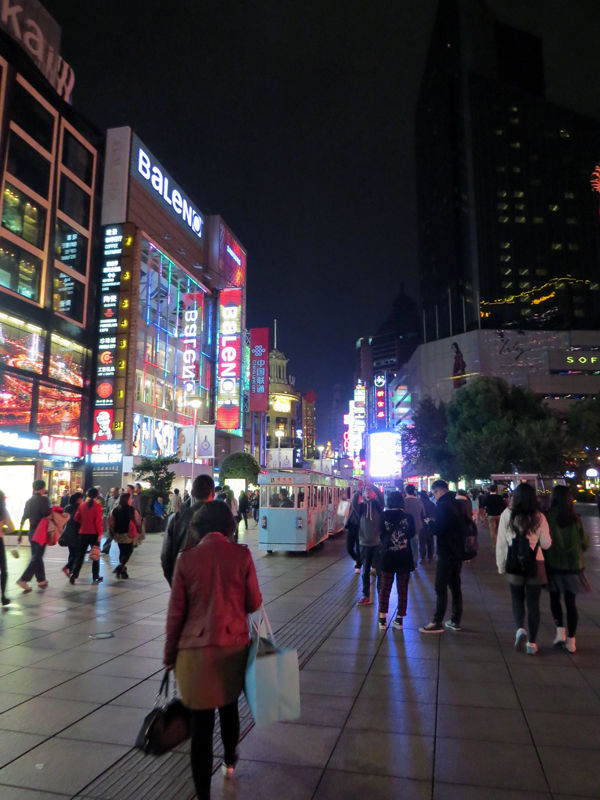

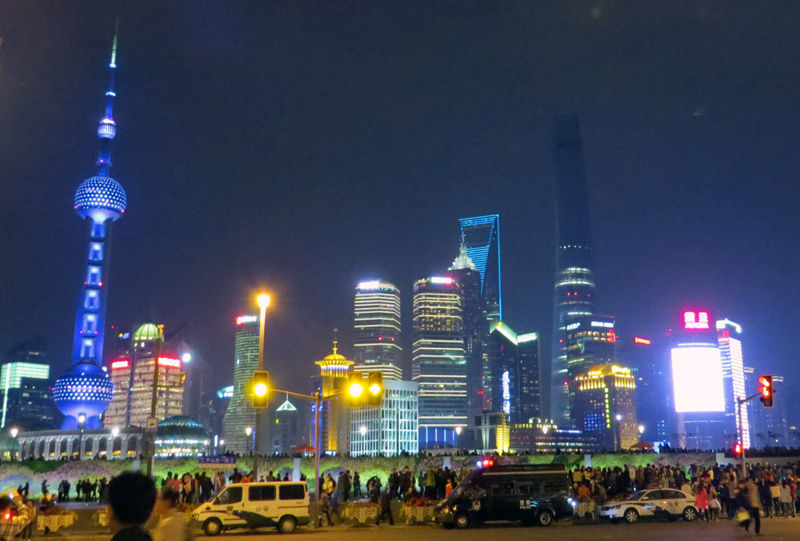
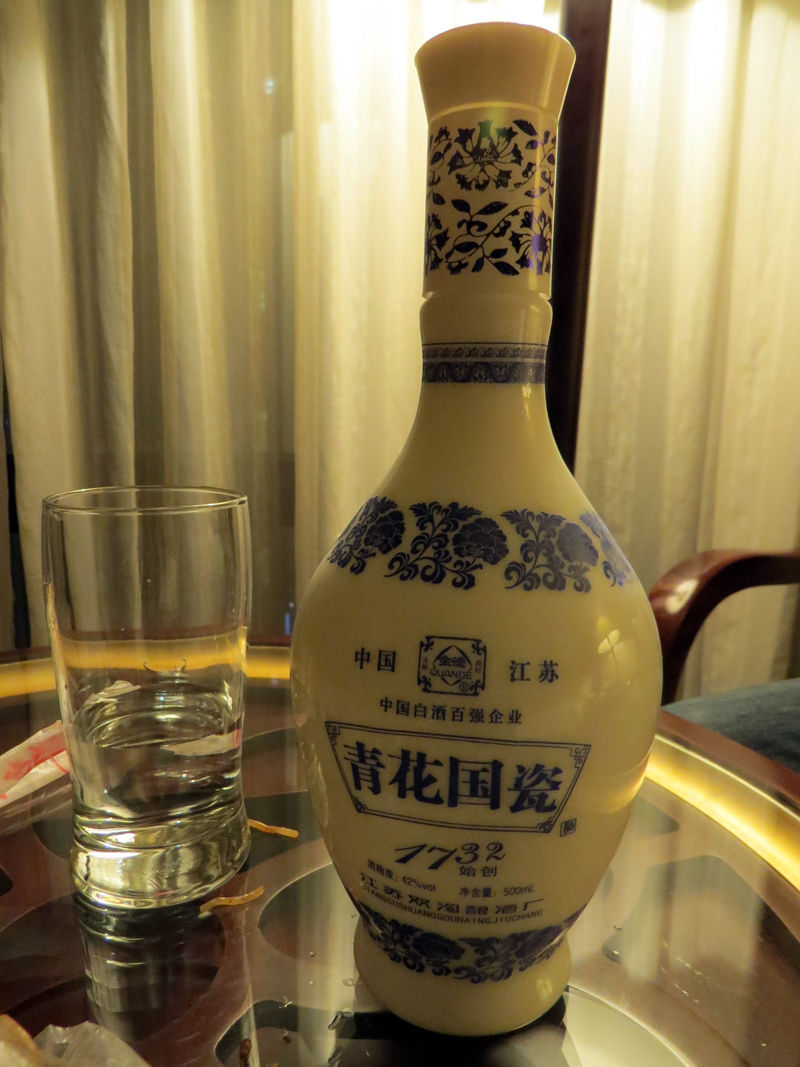


“You’ll lose your way,” was the first thing we heard when I and fellow journalist ‘U’ said we wanted to return to the hotel and explore Shanghai on our own. We were at the China International Travel Mart in Pudong New Area and our hotel was in Jing’an district, very close to the temple by the same name.
“No, we won’t,” we said very coolly. “Just give us the directions. If you don’t, we’ll find it anyway,” we added even more coolly. Our host relented. There was another Chinese gentleman in our group who seemed to have more faith in us. He pointed out our current position, destination and the corresponding Metro stations very meticulously on the map and gave us thorough directions.
Our host also wrote down something in Chinese on the map and told us to show it to someone in case we didn’t find the Metro station. Apparently it was the sign for the Metro station in Chinese.
“Take care of the lady. She’s your responsibility,” our host told ‘U’. “Don’t worry, I’ll take good care of the gentleman, too, though you haven’t asked me to,” I told him, not too coolly now. With an impish grin from ‘U’, we thanked the duo and left.

We were supposed to find the Huamu Road station. Just outside the venue, we met a bunch of young women and I showed one of them the map. We had been told that most of the youngsters follow and speak English. I pointed at Huamu Road station on the map and asked her where it was. She gave us very accurate directions — which we found out later — in English.
The station was about a 10-minute walk and we found it without a hassle. On the way, however, ‘U’ saw the Metro logo and the corresponding Chinese letters on a signboard. “Look, it’s totally different from what he has written on the map,” he pointed out. “I’m sure it means something else, maybe ‘These two are good for nothing’ or something like that,” he said and we had a good laugh.
The station looked very similar to the Metro stations we have in Kolkata. It looked like a proper ‘station’ unlike in New York where you have an escalator hidden somewhere in a corner of the sidewalk. I could never find them.
Anyway, the ticketing system stumped us. Neither of us had ever used a ticket-vending machine. In India, we still buy tickets from human beings at counters and my friends and cousin had provided me with cards during my US stay. To top it, the instructions on the machines seemed to be in Chinese.
We loitered about helplessly at the station for a while and realised there was no help forthcoming. There were long queues in front of the machines and we could not even take a good look to figure out how these worked.
Finally, I noticed that one of the machines was out of order though it was still switched on. On inspecting it, I found that there was an option for English instructions, too! And on probing a little further, I realised it was pretty simple, touch-screen technology. “C’Mon, we can do this,” I told ‘U’ and joined the queue.
When our turn came, I managed to get the tickets pretty smoothly, only faltering once, when the guy standing behind me came to the rescue. First hurdle crossed, we darted to the platform.
It was the last station and hence, there could be only one train to take, making our job slightly easier, ‘U’ pointed out. The train came and all the people got off. Then all the waiting passengers got on. We did too, but I was still a little unsure. So I found a young-looking Chinese guy, showed him the map and asked him if the train would go to Jing’an Temple station. And then the drama started.

To my utter misfortune, the guy did not speak English. But he was not ready to disappoint the lady either. So, his response was an excited mix of rapid Chinese and very vigorous shaking and nodding of the head and hand gestures. Unfortunately, I understood none of it.
And I have a very bad habit. When I don’t understand people, I stare at them wide-eyed and open-mouthed, which imparts the message without fail. It did this guy too. And he got very hot and red and frustrated. All the nearby passengers stared at us, too, making the poor chap even more flustered.
I looked at ‘U’ for help, but he disowned me completely. The Chinese guy tapped me on the hand to draw my attention. He showed me the map. We were on Line 7 (Orange). He kept pointing at the Green line (2).
I pointed at Jing’an Temple on the Orange line on the map as well as the route map on the train. He nodded, but again shook his head. He held up his index and middle fingers together in a V shape — obviously he meant two. But I had no clue what “two” he meant. Line 2 went to Jing’an temple as well, but so did Line 7. What was his problem?
By then, I knew for sure that we were on the correct train, but I couldn’t make him understand that either.
A couple of stations later came the junction with Green line. He got off and vigorously gestured to us to get off. But we stayed put. For a moment I thought he would drag us out of the train. Finally, very disappointedly, he watched us through the window as the train chugged off the station.
I heaved a sigh of relief. “What do you think you are doing, harassing a poor Chinese guy like that?” ‘U’ said in mock derision.
Both of us found seats after a while. ‘U’ promptly dozed off, but I kept thinking what the poor Chinese guy might have meant to say. Finally, after ages of solo brainstorming, it dawned on me. I woke up ‘U’ and told him very happily, “Look, it’s a couple of stations fewer to Jing’an Temple on the Green line compared with Orange line. That’s the “two” he was trying to tell me.”
“He could see that we are tourists. Why complicate things unnecessarily?” ‘U’ said very glumly and dozed off again.

Just to veer off the topic for a while, my experience on the Shanghai Metro told me that Shanghai is far from being a cosmopolitan city. There is no better place to figure this out than a huge public transport system like the underground railway. NYC’s cosmopolitanism is very evident on the Subway — if you look at one seat, the six persons seated will be from six different races. On the Shanghai Metro, people were mostly all Chinese.
Anyhow, we got off at Jing’an Temple station and found our hotel quite easily. And after half hour’s rest, we left for Nanjing (pronounced Nanking) Road, where we had been told we could find street food (which I wanted to taste) and lots of other attractions.
We had already been at Nanjing Road for dinner at a restaurant the previous evening. It’s a beautiful street, with the trees and buildings decorated with colourful light bulbs. We had been told that a 5km stretch of Nanjing Road is closed to traffic and is a tourist attraction with food and other stalls in the middle of the road. However, our host had also warned us that this stretch was quite far from our hotel, where Nanjing Road West started. But we were not to be put off.
We started walking at a brisk pace, hoping to reach the tourist-attraction stretch as early as possible. The showpiece road was lined by stores of well-known international brands — apparel, jewellery, accessories… There were also bakeries that sold Chinese versions of Western items like cakes and pastries, but nothing that looked quintessentially ‘local’.
As the evening wore on, more and more pedestrians joined us. The girls especially were in their fashionable best (I have already given a description in the last post). Unfortunately, the sidewalk is also meant for bicycles and its battery-operated motorized avatar. It was quite chaotic and the two of us went with the flow.
The carriageway was choc-a-block with vehicular traffic. And, amid all the regular hatchbacks and sedans was a Ferrari! It gave me a start with its trademark engine sound both times it passed us by.
Our tour guide Phillip had ‘boasted of’ Shanghai’s chaotic traffic the very first day we had gone out. Unfortunately, each and every prediction of his regarding the time we would take to reach our destination had failed. We had never been stuck in inordinately long traffic jams and had taken much less time than he had predicted.
“We, Chinese people, used to ride bicycles. Now, we have graduated to cars. But we drive our cars like we used to ride bicycles. We follow cycle rules to drive cars,” he had joked. Now, we finally got an idea of what he had meant.

No driver stopped even at signals. At the crossings, the two of us would wait for the cars to stop when the signal turned red. But none of them did. Then we would find the locals simply jump on to the carriageway and walk across nonchalantly. Inches away, the cars would screech to a halt.
Coming from cities like Delhi and Kolkata, the two of us are perfectly used to unruly traffic of the highest order. But nothing had prepared us for Shanghai. In India, at least cars stop at signals. Finally, we also started turning a blind eye to the speeding cars and jumped on to the carriageway, hoping fervently that the drivers would slam the brakes on time. They did every time.
But the stretch closed to traffic never came. We walked for around an hour, with me keeping a hawk eye on all the streets that branched off from Nanjing Road. But there was no sign of what we were looking for. Finally, we decided to veer into one of the roads that led off Nanjing Road.
We walked down the road, found a road parallel to Nanjing Road, crossed it and went into the narrower streets. The shops here were the regular stores — grocery, hardware, regular apparel… As we walked, ‘U’ suddenly said, “Have you noticed? There are no off-shops. Don’t people here drink?”
I realised now why he had so gladly accompanied me on my quest for street food. He was on Mission Alcohol!
I did not mind. It was on my agenda too. One of my colleagues had told me about the local alcoholic drink that comes in bottles that look like Chinese vases. I wanted to taste it.
After a while, we found an off-shop. But neither did the shopkeeper speak English nor did the bottles have English labels. We had no idea which was what.
We walked a little more and went deeper into the alleyways. At the next off-shop, we found the vase-like bottles and they were not too expensive either. A 500ml bottle came for 23RMB. The alcohol content was 55%. I later found out it’s called ‘baijiu’.
As usual, the shopkeeper lady did not speak English. But ‘U’ seemed desperate now. “Let’s buy one. How different can it be? We’ll mix water and drink it,” he said.
But I decided to ‘ask’ the lady as best as I could. I knew “shui” means water in Chinese. I pointed at the bottle, said “Shui? Shui?” and pretended to stir. Then I held up the bottle to my mouth and said “Glug glug?”
To my utter amazement, she understood my question! Shaking her head, she pointed at a whiskey bottle and said “shui”. Then she pointed at the bottle we wanted to buy, put it to her lips and said, “Glug glug glug.”
The message was clear: Don’t mix water. It’s meant to be drunk neat.

‘U’s mission complete, now began our hunt for street food. Very close to the off-shop, in one of the alleys, I finally found what I was looking for. In rows sat vendors by the roadside, selling chow mien, dumplings, grilled chicken and other foodstuff. As we inspected the alley, there were also shops selling sesame-topped cakes, pies and other exotic bakery items. The fish and vegetable markets were close by, too.
This was the ‘real’ Shanghai — far from the glitter of Nanjing Road and Pudong’s skyline. The people looked ‘real’, not like mannequins that have fled Calvin Klein or Zara showrooms. But alas! None of them spoke English.
We bought some bakery stuff. They keyed in the price on the calculator for our benefit. Thankfully, the calculators have English digits, not Chinese.
The stall selling chow mien was fascinating. There were rows of different kinds of meat and veggies. We watched and realised people can pick whatever ingredients they want in their chow mien. This is not what we get in Kolkata, where everyone is dished out uniform stuff, though you can ask the cook to leave out something you don’t want.
I pointed at the noodles and asked “How much?” The woman, who was probably the stall owner, keyed in ‘7’ on her calculator. “7 yuan?” I asked. She nodded. “That’s not much, though expensive by Indian standards,” I told ‘U’, who looked sceptical. I asked for one plate of chow mien, packed.
The cook, a youth of about 22, started off at once with the wok. The woman then pointed at the rows of shredded meat and gestured ‘two’ with her fingers. Not yet recovered from the muddle of “two” earlier in the day, I was now stuck in another one. But I guessed she meant we could have two kinds of ingredients in our chow mien. So I pointed at two kinds of shredded meat.
The cook put those in the wok. Then the woman pointed at the veggies and again gestured ‘two’ with her fingers. By now, I had the feeling that something was wrong. “I’m telling you, they are looting us,” said the ever-cynical ‘U’. I ignored him and pointed out two veggie ingredients. And they went into the wok as well.
But the woman still looked very unhappy. She kept pointing at the shredded stuff and looked as me curiously. But I shook my head, now completely unsure of how things worked. The cook also told her something, after which she fell silent. “I’m telling you, they’re looting us,” ‘U’ whispered again.
When the packet came, I handed the woman a 10-yuan note. She looked at me open-mouthed and then keyed in ‘15’ on the calculator. “But you said ‘7’,” I said, surprised. She started gesturing so frantically that I thought it wise to pay the bill first.
‘U’ looked at me with this “I told you” look even as I was trying to add things up. Then it struck me. “Okay, she said 7RMB for only the noodles and 2 for each of the other ingredients,” I said as we started walking back to the hotel.
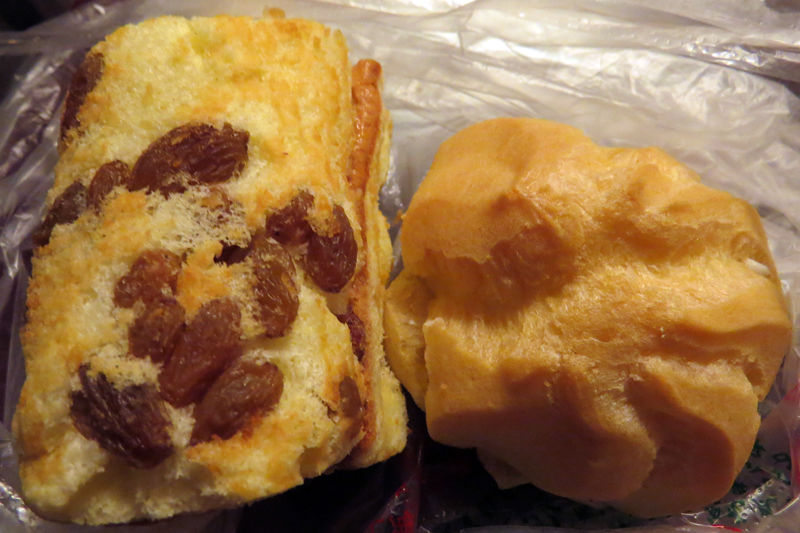
“Right. I’ve figured it out already,” ‘U’ sulked. “But then, it was not her fault. She was constantly gesturing ‘two’. We misunderstood,” I laughed. But ‘U’ was certain we had been cheated.
Though that evening, we could not find the stretch of Nanjing Road we had been looking for, we visited it the very next evening — our last one in Shanghai — when we were taken there along with our team. It looks very similar to NYC’s Times Square. Blazing lights, glittering decor, busy roads with a lot going on at the middle — touristy tram rides, hawkers vying for tourists’ attention, tourists trying to get the best deal and locals taking a break from the monotony of their everyday lives.
A woman selling the famous Rolex fakes that are impossible to separate from the originals accosted us. One of our team members wanted to buy one. He handed over the charge of bargaining to ‘U’. I can’t remember the original price she had asked for. It was probably 300RMB. ‘U’ brought it down to 130. It did not take her too long to agree.
She led us down the narrowest of alleyways, into a gifts shop, up a rickety wooden staircase, into a small room behind a locked door. Some of those who had joined us wanted to turn back, but I valiantly led the way, even the faintest scent of adventure never failing to attract me.
Inside were rows of ladies’ handbags and the Rolex fakes. The guy who wanted to buy the watch kept his original next to the fake of the same model. Nothing seemed different. An American team came in soon after us and the woman took us outside to take the payment. She would charge the Americans much higher for the watch.
Many of our teammates bought gifts and mementos at Nanjing Road — electronic toys, local clothes, magnets, shoes, bags. But again, bargaining is the key word.
Personally, I had enjoyed the previous evening more, walking down the unknown streets of Shanghai. The chow mien had a taste of home — it was very similar to the stuff we get on Kolkata streets. Baijiu is one of the best local drinks I have tasted so far — strong but bearing a very sweet flavour. And the bakery products were quite delicious.
That was the closest I came to the ‘real’ Shanghai. And it didn’t seem all that different from home.








